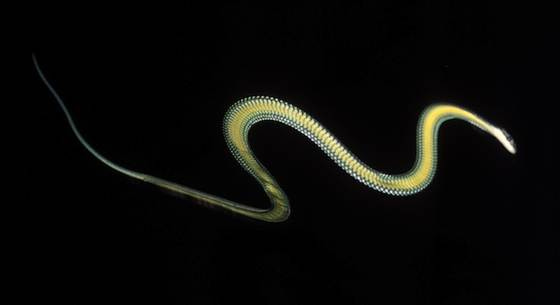Snakes can do The Locomotion Better than You
From a limb-centric perspective, snake mobility may seem limited. However, a recent review by Tingle et al debunks this old-fashioned viewpoint. The author’s argue that snake locomotion deserves much more attention than it has traditionally been allowed, citing applications in robotics, machine self-servicing and more. Through taking a deep dive into the functional diversity of snake locomotor behavior, they reveal that the life of a snake is more shake and less slither than we might expect.
Traditionally, four types of locomotion have been proposed: lateral undulation, side winding, concertina locomotion and rectilinear locomotion. In actual fact, this is an oversimplification and there is evidence to suggest that snake locomotive diversity is likely to reflect environmental niche and body morphology even at the species level. This makes sense, since snakes are the most habitually diverse of the limbless tetrapods, and represented by terrestrial, arboreal, aquatic, marine and fossorial species.
Lateral undulation is where a wave of motion travels from head to tail via lateral bending of the body. The snake propels itself forward by pushing against surface objects as it generates this movement. This is the most common form of locomotion and often used to navigate environmental clutter. Aquatic snakes use lateral undulation to swim, with some marine Elapid and Achrochordids possessing paddle shaped tails for increased efficiency. Variations on lateral locomotion include backwards swimming in snakes such as Hydrophis platurus and anguilliform locomotion, also seen in eels.
Sidewinding tends to be used by snakes living on sandy terrain such as desert vipers, and is similar to lateral undulation but with some segments of the body remaining static as other parts are lifted off the ground. In smaller bodied-snakes this movement can sometimes generate enough force to propel the animal into the air, with some species even reported to “cartwheel” as an escape mechanism.
Concertina locomotion is the most energetically costly type of locomotion but also the most versatile. For example, it is often used when tunneling in confined spaces. The motion consists of alternating axial bending and straightening with static anchoring.
Finally, rectilinear locomotion is the slowest form of locomotion in snakes and is driven by movements of the ventral skin in a cyclical wave pattern. This is linked to the action of the cutaneous and costo-cutaneous muscles and may be more common in larger terrestrial snakes.
Other more elaborate locomotor forms further highlight the diversity of movements in the snake repertoire. Specifically, in arboreal snakes, climbing, cantilevering and lunging can be observed, and impressively, 5 species of canopy-dwelling Chyrsopelea snakes are even capable of glided flight due to hyper-mobile ribs which generate lift by acting as an aerofoil. Furthermore, fossorial snakes such as those in the Typhlopidae family often have reinforced skulls to limit impact when burrowing underground. Amphisbaenians show similar skeletal adaptations to fossoriality. In conjunction with skeletal, tendon and integumentary adaptations, it is supposed that because snakes possess many muscles that articulate to multiple joints, this may increase the number of movements available to them for specific functions.
So next time you complain about a bad back or a headache, just be glad you don’t have to move about in a series of undulations, or use your head as a battering ram as you tunnel to the nearest Lidl for your next meal!
Read this paper for more information: https://doi.org/10.1111/nyas.15109




